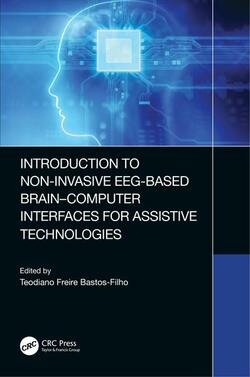 |
Облако тегов |
 |
 |
Arduino, Circuit Cellar, Elektor, Everyday Practical Electronics, Raspberry Pi, антенна, аудио, видео, Журнал, Измерения, Микроконтроллеры, Микросхемы, микроэлектроника, приборы, Программирование, Радіоаматор, Радио, Радио (жур.), Радиоаматор, Радиоконструктор, Радиолюбитель, радиолюбителю, Радиомир, радиосвязь, радиоэлектроника, ремонт, Ремонт и Сервис, робототехника, Связь, Серия Ремонт, справочник, схема, Схемотехника, Схемы, Телевидение, Телевизоры, усилитель, Электрик, Электроника, Электротехника
Показать все теги
|
 |
 |
 |
 |
 |
Авторские права |  |
 |
Все книги на сайте представлены исключительно в ознакомительных целях!
Авторам, желающим внести поправки, просим связаться с администрацией.
Администрация
|
 |
 |
 |
 |
|
 |
 |
Микроэлектроника, Компьютер-помощник: Introduction to Non-Invasive EEG-Based Brain-Computer Interfaces for Assistive Technologies
|
 |
 |
 Просмотров: 92 Просмотров: 92  добавил: Ingvar16 добавил: Ingvar16  24-07-2020, 03:49 24-07-2020, 03:49 
|
|

Название: Introduction to Non-Invasive EEG-Based Brain-Computer Interfaces for Assistive Technologies
Автор: Teodiano Freire Bastos-Filho
Издательство: CRC Press
Год: 2021
Страниц: 101
Язык: Английский
|
|
This book aims to bring to the reader an overview about different applications of brain–computer interfaces (BCIs) based on our experience of more than 20 years working on these interfaces. First, in Chapter 1, a review of the human brain and EEG (electroencephalogram) signals is conducted, describing the human brain, anatomically and physiologically, with the objective of showing some of patterns of EEG signals used to control BCIs.
The chapter introduces aspects such as planes of section and reference points of the human brain; primary somatosensory cortex (S1), primary motor cortex (M1), primary auditory cortex (A1), primary visual cortex (V1), and the areas of Wernicke and Broca; contralaterality of motor movements (pyramidal tract and contralaterality of motor movements); neuronal circuits and oscillatory activity of the thalamo-cortical system; circuits that are involved in motor activity (direct pathway of movement); EEG; EEG electrodes; EEG acquisition; main EEG rhythms; artifacts present in the EEG signals; methods for EEG filtering, such as spatial filters; signal-to-noise ratio (SNR); event-related potential (ERP); movement-related (cortical) potential (MRP/MRCP); event-related desynchronization/synchronization (ERD/ERS); and steady-state visual evoked potential (SSVEP) and its types: dependent SSVEP and independent SSVEP.
Following, in Chapter 2, the BCI is introduced, and in Chapter 3 different applications of BCIs are discussed, which were developed in our laboratory, such as a BCI based on ERD/ERS patterns in rhythms, used to command a robotic wheelchair and an augmentative and alternative communication (AAC) system onboard the wheelchair; a BCI based on dependent SSVEP to command the same robotic wheelchair; a BCI based on SSVEP to command a telepresence robot and its onboard AAC system; a BCI based on SSVEP to command an autonomous car; a BCI based on independent SSVEP, using depth-of-field (DoF), to command the same robotic wheelchair of our laboratory; the use of compressive technique in our SSVEP-based BCI; a BCI based on motor imagery (using different techniques) to command a robotic monocycle and a robotic exoskeleton; and our first steps to build a neuro-rehabilitation system based on motor imagery of pedaling together an immersive virtual environment with avatar. This book is concluded with a wide discussion, in Chapter 4, about the future of the non-invasive BCIs.
Ключевые теги: BCIs, интерфейс, компьютер, Железо
|
|
Содержание  Оглавление Оглавление
|
|
|
|
|
ПЛИС и параллельные архитектуры для применения в аэрокосмической области. П ...
|
Следующий пост >> |
|
|
|
Другие новости по теме:
|
-
Arduino: The Arduino Book is the Ultimate Guide to Learn And Understand Ard ...
-
Simple Arduino based 4 Floor Elevator project
-
Advanced Robotics for Medical Rehabilitation: Current State of the Art and ...
-
Python Robotics Projects (+code)
-
Learn Raspberry Pi with Linux (+code)
|
|
 |
 |
|
 |
|
 |
Информация |
 |
 |
 |
Посетители, находящиеся в группе Гости, не могут оставлять комментарии к данной публикации. |
 |
 |
 |
 |
|
 |
 |
Календарь |
 |
 |
|
« Август 2020 »
|
| Пн |
Вт |
Ср |
Чт |
Пт |
Сб |
Вс |
| |
1
|
2
|
|
3
|
4
|
5
|
6
|
7
|
8
|
9
|
|
10
|
11
|
12
|
13
|
14
|
15
|
16
|
|
17
|
18
|
19
|
20
|
21
|
22
|
23
|
|
24
|
25
|
26
|
27
|
28
|
29
|
30
|
|
31
|
|
|
 |
 |
 |
 |
|

